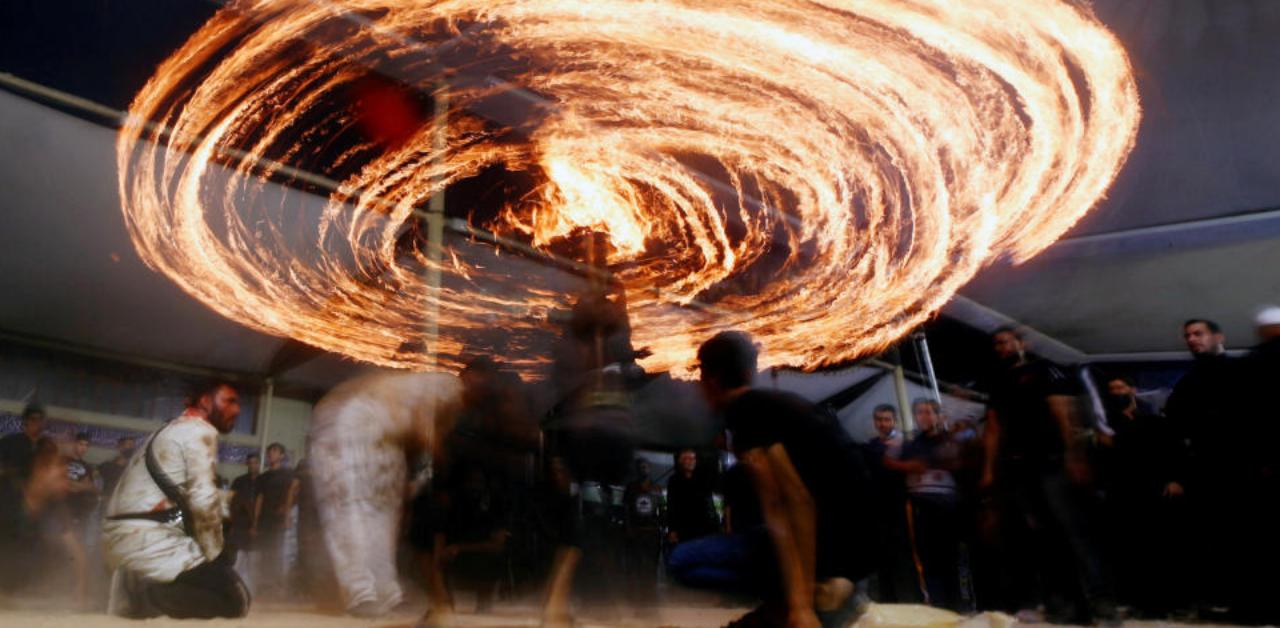By: Sabrina Mervin
The rituals that commemorate the month of Muḥarram in the Shiʿi world come with a stream of sounds, images, and emotions, increasingly popularized through the media. A vibrant popular culture spread through the internet and satellite television channels stems from this ‘invented tradition’, which is reinvented every year, reproduced and readapted, with a tension between the local, and even micro-local level (at the level of a village or district), and the global level. For the last 50 years or so, massive population movements and urbanization have led to the development of these rituals; politicization has transformed them as the rise of Shiʿism in the Middle East has increased their visibility. More than ever, these rituals enable the Shiʿa to reaffirm their presence and their identity, not always without a clash (in Pakistan or in Iraq, in particular, where acts of inter-community violence are often committed during the ceremonies). But they also enable them to convey a supposedly universal message: the message of the triumph of Good over Evil, the ‘triumph of blood on the sword’. Yet the aim is to commemorate a defeat, the Battle of Karbalāʾ, and to mourn, for Ḥusayn the grandson of the prophet Muḥammad and the third Shiʿi Imam, who died there as a martyr. What we call the Karbalāʾ paradigm is based on a particular conception of history, peculiar especially to Twelver Shiʿism. A number of Shiʿi doctrines developed around this paradigm, while identities and social relations formed. After presenting and analyzing this paradigm, we will detail what the rituals of Muḥarram consist of. Then, we will focus on two themes, each one of them opening onto a more general direction of thought. Our analysis is based on long-term fieldwork that took place in the Middle East (Lebanon, Syria, and Oman) and in India (Hyderabad) between 1994 and 2009, to enable comparative approaches. The richness of the texts published on the occasion of ʿĀshūrāʾ, from the accounts of travelers to the extensive research carried out over the last years, revealed both the unity and the extreme diversity of the discourses.
Such an approach seems to us fruitful for improving our knowledge of Shiʿism and Shiʿi societies as much as for religious studies in general, in particular studies of religious rituals in a comparative manner. To do so, two themes seemed relevant to me, especially as they addressed questions that supposedly raise a number of issues that are controversial among religious authorities. The first theme deals with the representation of the sacred figures ofShiʿism in different forms and, in particular, in the form of theatrical representation. This will bring us to comment on the conception of history that stems from it and on the politicization – or the lack of politicization – of the discourses. The second theme deals with the practices of mortification and the debate that they lead to amongʿulamāʾ. These two themes will enable us to see how the concerned actors seize on ‘modernity’ in their discourses on ʿĀshūrāʾ ceremonies. Furthermore, they will lead us to broaden the scope of our discussion of two complementary dimensions of the rituals; the collective dimension with its social function and the individual dimension with the central role played by emotion.

